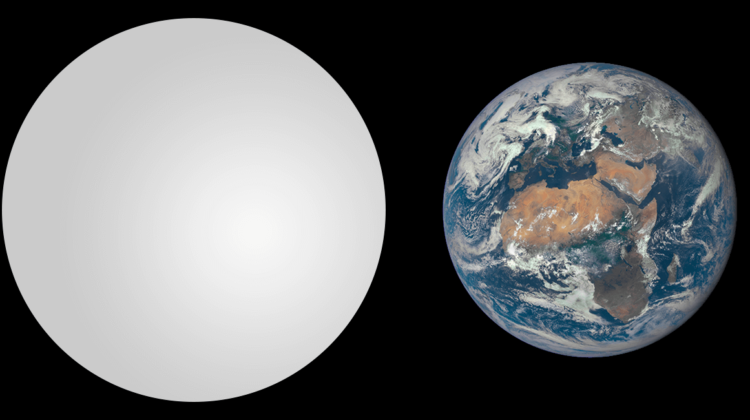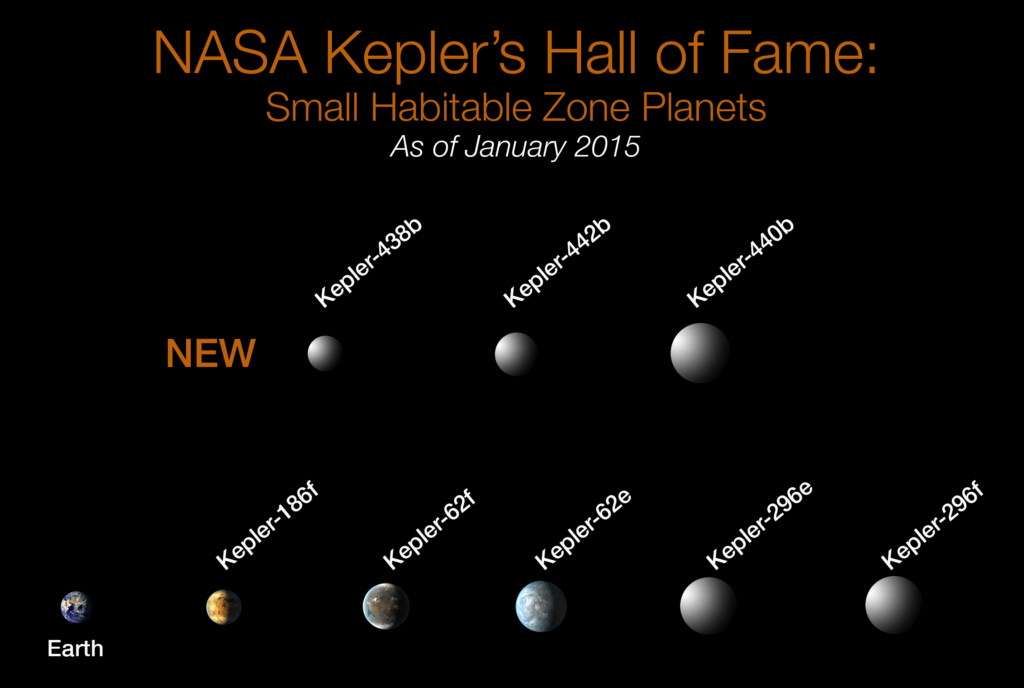
Kepler-442b, also known as KOI-4742.01, is an exoplanet that has been confirmed as a near-Earth-sized planet, orbiting within the habitable zone of the K-type main-sequence star Kepler-442, located approximately 1,206 light-years (370 pc) away from Earth in the Lyra constellation. Discovered by NASA’s Kepler spacecraft using the transit method, this rocky planet has an estimated mass of 2.3 and radius of 1.34 times that of Earth. Due to the star’s low mass, Kepler-442b has a high probability of being habitable. In this article, we will explore the physical characteristics of the exoplanet, its host star, and its habitability potential.
Physical Characteristics
Kepler-442b is classified as a super-Earth, with a mass and radius bigger than Earth but smaller than Uranus and Neptune. With a radius of 1.34 times that of Earth, it is likely to have a solid surface. The estimated mass of the exoplanet is 2.36 times that of Earth. Its equilibrium temperature is 233 K (-40°C, -40°F). If the composition of Kepler-442b is rocky like Earth, the surface gravity would be 30% stronger than Earth’s.
Host Star
Kepler-442b orbits a K-type star named Kepler-442. This star has a lower mass (0.61 M☉) and radius (0.60 R☉) than the Sun, and is around 2.9 billion years old. The star is somewhat metal-poor with a metallicity of -0.37, or 43% of the solar amount. Its luminosity is 12% that of the Sun, and its temperature is 4,402 K (4,129 °C; 7,464 °F). The star’s apparent magnitude, or how bright it appears from Earth’s perspective, is 14.76. This makes it too dim to be seen with the naked eye.
Orbit
Kepler-442b orbits Kepler-442 with an orbital period of approximately 112 days. Its orbital radius is about 0.4 AU (60 million km; 37 million mi), slightly larger than the distance of Mercury from the Sun. It receives about 70% of the sunlight that Earth receives from the Sun.

Habitability
Kepler-442b is located within the habitable zone of its star, meaning that liquid water could exist on its surface. The exoplanet is one of the most Earth-like planets yet discovered in terms of size and temperature. It is just outside the zone in which tidal forces from its host star would be strong enough to fully tidally lock it. Kepler-442b is considered to be the most habitable non-tidally-locked exoplanet discovered to date, as of July 2018.
Stellar Factors
K-type main-sequence stars like Kepler-442 have a longer lifespan than the Sun, estimated to be between 18 to 34 billion years. Despite this advantage, these stars can threaten life due to high stellar activity and strong solar winds in their early life stages. The duration of this period is inversely linked to the size of the star. Kepler-442’s age is uncertain, so it is unknown whether it has passed this stage. If it has, Kepler-442b may be more suitable for habitability.
Tidal Effects and Further Reviews
As Kepler-442b is closer to its star than Earth is to the Sun, it will likely rotate much more slowly than Earth, and its day could be weeks or months

Leave a Reply